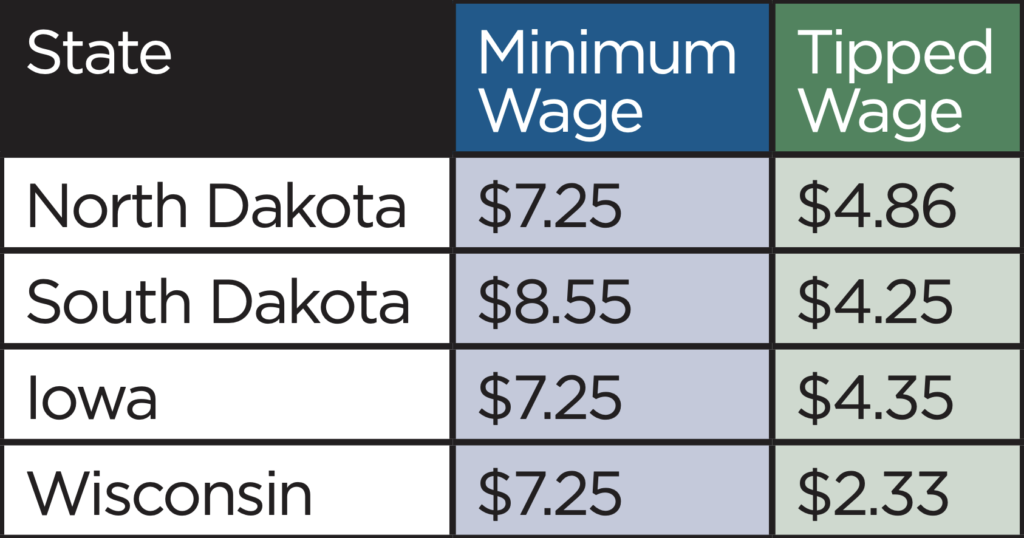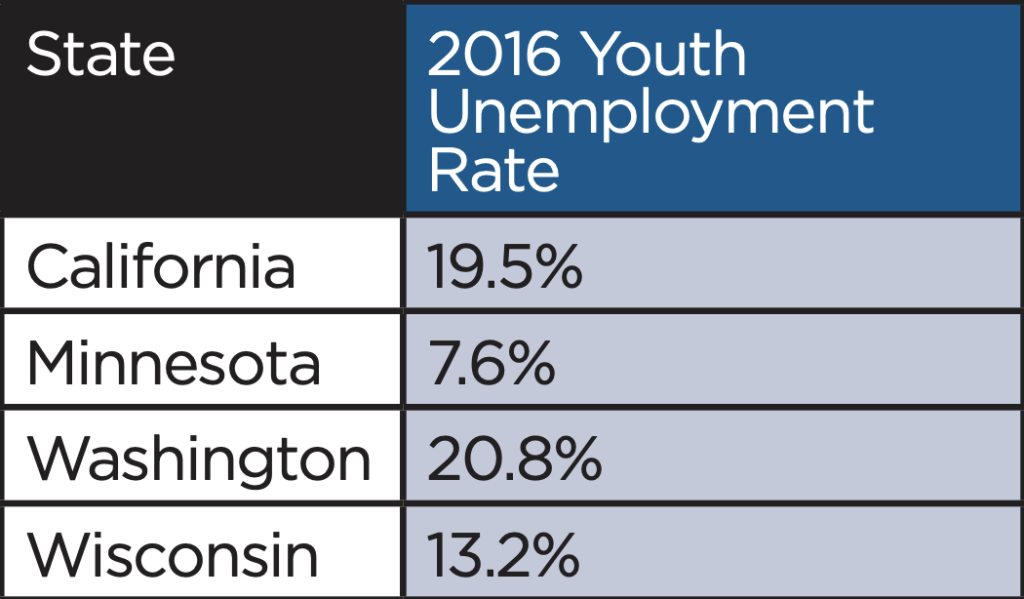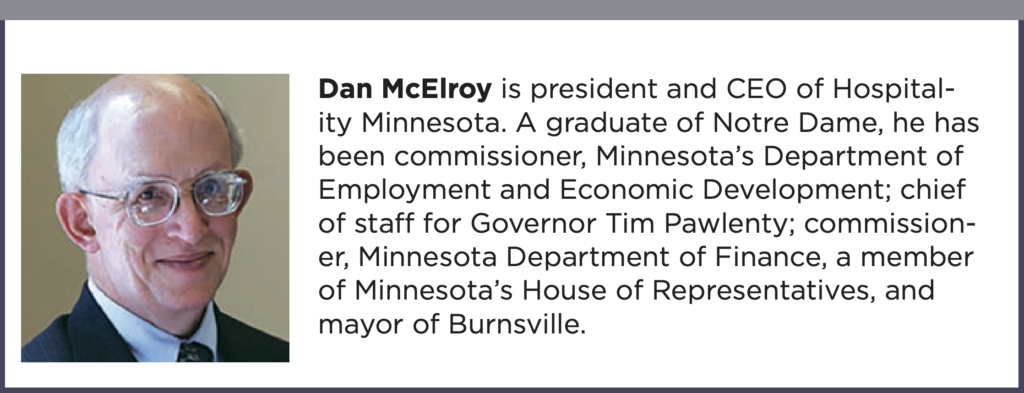The opportunity wage
Small business wants to enhance opportunities for people to enter the workforce.
The United States has had a minimum wage since the Fair Labor Standards Act passed in 1938. The first minimum wage was 25 cents an hour. When I got my first job in 1963, I made 50 cents an hour but got a big raise the following year, to 75 cents an hour. Times have changed. The Minnesota wage was raised in three steps to the current $9.50 an hour for large employers by a law passed in 2014. In comparison, the federal minimum wage has been $7.25 since 2009. I find it interesting that we now have five different minimum wages in Minnesota. The rate varies for large employers, small employers, workers under 18, trainees under 20 for their first 90 days of employment, and international students working here on J-1 visas who also receive lodging or meals. Did someone say this is simple?
We haven’t been clear in law or policy about whether the minimum is intended to be a “beginner’s” wage, a living wage, or something in between. An amount that may make sense for a first-time worker may not be right for someone with more experience and a higher level of skills.
Economist Mark Perry told a recent CAE audience that the official minimum wage works best when it is close to the “market wage” set by the competition for labor in an open market. At that level, the minimum keeps some employers from taking advantage of their workers without adversely distorting the market.
In most parts of Minnesota, the market wage is currently at or above the state minimum wage. For example, the current pay for dishwashers and beginning cooks in the metro area at “full service” restaurants and hotels is about $13 an hour, and the rate for experienced cooks is $15 to $18 an hour. Downtown hotels are paying housekeepers about $14 an hour. Those figures are lower in parts of rural Minnesota, but not by much. In today’s economy, there is a strong job market for many workers.
If the market wage is already close to $15, why would a law setting the wage at that level be a problem? There are a number of challenges, including the impact of an economic downturn in the future that may reduce the demand for labor and the impact of cross border competition for customers with states that have a lower cost of labor. The official minimum wage in our neighboring states is shown in this table:
Unlike the states around us, Minnesota does not have a tipped employee wage that’s different than the minimum wage. The federal law and those of 43 states acknowledge the importance of tips to a large number of workers and recognize a portion of tips as part of their minimum wage. Tips are considered wages for payroll taxes, social security, Medicare, and unemployment, but not for the minimum wage in Minnesota. The minimum cash wage in some state for tipped workers is way too low, but that isn’t the case in most of our neighboring jurisdictions.

The Minnesota House passed a tipped wage in 2015 of $8.50 an hour for workers who earned a total of $12 an hour or more with the total of their wages and tips. Under pressure from organized labor, the Senate declined to take up the issue. This would have been the most generous cash wage for tipped employees among the 43 states that recognize tips. A survey of full-service restaurants in 2014 found that the average total earning of tipped employees was over $18 an hour statewide and over $21 an hour in the metro area. The risk of not recognizing the importance of tipped jobs is that they have tended to go away as the minimum wage has risen in other states. In Minnesota, we have an average of 19 employees per restaurant. That had been the average in Washington and Oregon until their minimum wage increased; now it’s less than 15 per location. Many of the jobs that have been automated or eliminated have been high paying tipped positions.

Another aspect of this issue is the impact on young workers of a high minimum wage that doesn’t include a youth provision. A 16- or 17-year-old who hasn’t had a job before will have a very hard time competing for work if the wage is set at $15 an hour. It is simply a fact that people can’t get their next job or a better job until they’ve had their first job. Minnesota has one of the lowest unemployment rates for young people ages 16 to 19 in the country. We want to be careful not to jeopardize the opportunity to for young people to enter the workforce.
The small business people I work with every day value their team members and want to pay them well. The system works when wages are set by the market and then supported by a reasonable minimum wage that prevents abuses. The current campaign for a much higher rate for all workers, including beginners and tipped staff, is fraught with risk. We should continue the current dialogue but take action thoughtfully and carefully. There is a lot at stake for business owners, customers, and our valued team members.
